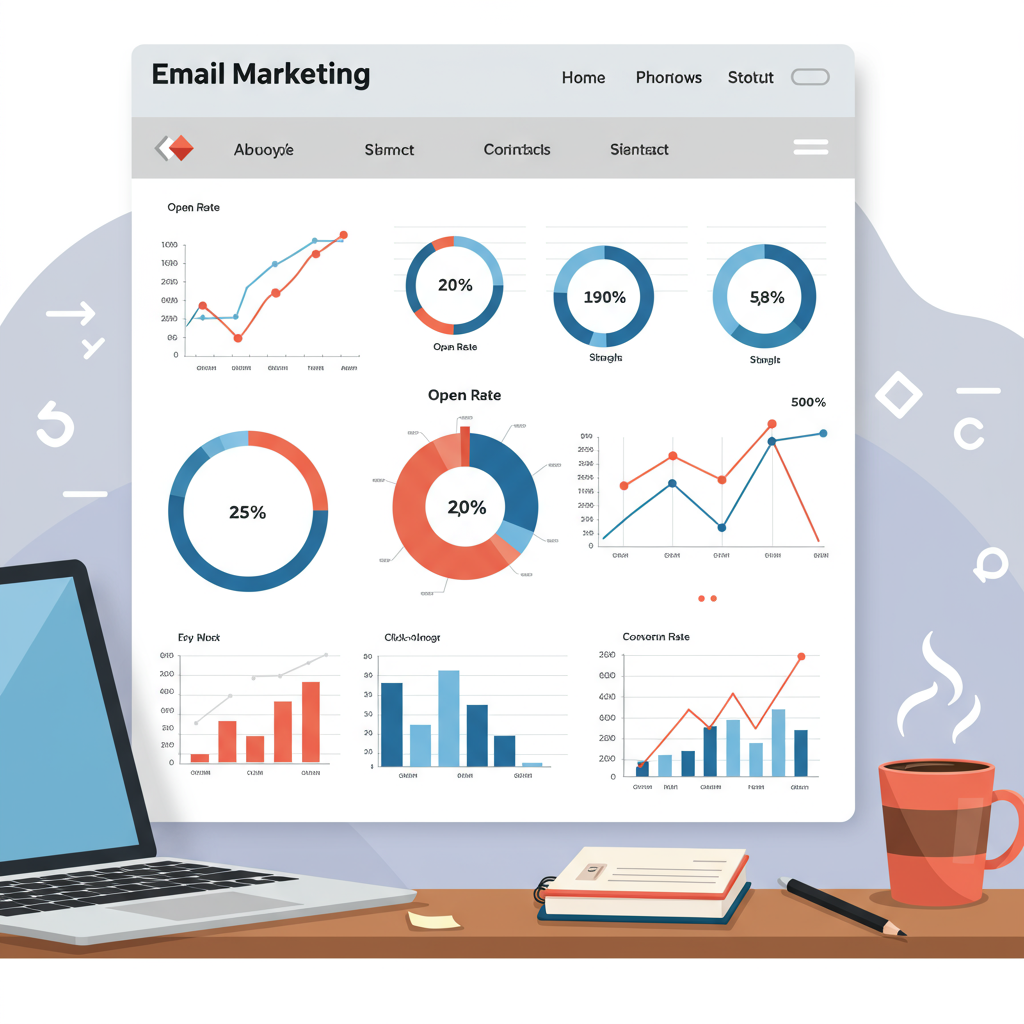Unlocking Growth and Understanding Your Customers Through Data-Driven Email Campaigns.
As a Shopify merchant, you know the power of direct communication with your customers. Email marketing isn’t just a tool; it’s a cornerstone of building lasting relationships and driving sales.
But sending emails isn’t enough. To truly succeed, you need to understand how your emails are performing. This is where email marketing metrics come into play.
Tracking the right metrics allows me to move beyond guesswork. It helps me identify what’s working, what’s not, and where I should focus my efforts for maximum impact.
It’s about making data-driven decisions that directly contribute to my store’s bottom line. Let’s dive into the essential metrics I personally track for my Shopify business.
**1. Open Rate:** This is perhaps the most fundamental metric. It tells me the percentage of recipients who opened my email.
A high open rate indicates that my subject lines are compelling and my audience recognizes and trusts my brand. It’s the first hurdle to clear.
I always aim for an open rate above the industry average, which typically hovers around 15-25% for e-commerce.
To improve it, I focus on crafting irresistible subject lines, personalizing them, and ensuring my sender name is clear and trustworthy.
**2. Click-Through Rate (CTR):** Once an email is opened, the CTR measures the percentage of recipients who clicked on a link within the email.
This metric is a direct indicator of how engaging my email content is and how effective my calls to action (CTAs) are.
A strong CTR means my message resonated, and customers were motivated to take the next step, whether it’s visiting a product page or learning more.
I look for a CTR of at least 2-5% for promotional emails. To boost it, I ensure my emails are visually appealing, the content is relevant, and my CTAs are clear and prominent.
**3. Conversion Rate:** This is where the rubber meets the road for my Shopify store. The email conversion rate tells me the percentage of recipients who completed a desired action after clicking through from an email.
For me, this usually means making a purchase. It directly links my email efforts to revenue generation.
Tracking this metric helps me understand the true ROI of my email campaigns. A high conversion rate means my email content, landing pages, and product offerings are all aligned.
I segment my audience and tailor my offers to improve conversion. Personalized recommendations often lead to higher conversion rates.
**4. Bounce Rate:** This metric indicates the percentage of emails that couldn’t be delivered to the recipient’s inbox.
There are two types: hard bounces (permanent delivery failures) and soft bounces (temporary issues). A high bounce rate can harm my sender reputation.
I regularly clean my email list to remove invalid addresses and maintain a low bounce rate, ideally below 2%. This ensures my emails reach legitimate customers.
**5. Unsubscribe Rate:** This metric shows the percentage of recipients who opted out of my email list after receiving an email.
While some unsubscribes are inevitable, a consistently high rate signals that my content might not be relevant, I’m sending too frequently, or my audience expectations aren’t being met.
I monitor this closely. If it spikes, I review my content strategy and sending frequency. Keeping it below 0.5% is my goal.
**6. List Growth Rate:** This metric tracks how quickly my email list is expanding. A healthy, growing list is vital for long-term success.
I use various strategies like pop-ups, lead magnets, and social media promotions to continuously attract new subscribers.
A steady growth rate ensures I always have a fresh audience to market to, preventing list fatigue and maintaining engagement.
**7. Revenue Per Email (RPE) / Email Marketing ROI:** This is a critical financial metric. RPE calculates the total revenue generated by an email campaign divided by the number of emails sent.
Email marketing ROI takes it a step further, comparing the revenue generated to the cost of running my email campaigns.
These metrics directly show me the profitability of my email efforts. I use them to justify my email marketing spend and optimize for higher returns.
**8. Customer Lifetime Value (CLTV) from Email Segments:** I also look at the CLTV of customers acquired or engaged through specific email campaigns or segments.
This helps me understand which email strategies are attracting my most valuable customers over the long term, not just for a single purchase.
**9. Segmentation Performance:** While not a single metric, analyzing the performance of different email segments (e.g., new customers, repeat buyers, abandoned cart users) is incredibly insightful.
It allows me to see which segments respond best to certain types of content or offers, enabling more targeted and effective campaigns.
**10. A/B Testing Results:** I constantly A/B test elements like subject lines, CTAs, and email layouts. Analyzing the results helps me refine my strategy.
It’s a continuous learning process that ensures I’m always optimizing for better engagement and conversions.
**Tools for Tracking:** Most email marketing platforms integrated with Shopify (like Klaviyo, Mailchimp, Omnisend) provide comprehensive analytics dashboards.
I also cross-reference these with my Shopify analytics to get a holistic view of customer journeys and sales attribution.
**My Approach to Improvement:** For each metric, I don’t just track it; I analyze the trends. Is my open rate declining? Is my CTR stagnant?
This analysis prompts me to experiment with new strategies, refine my content, and segment my audience more effectively.
It’s an iterative process of testing, learning, and adapting.
What do you think about this article? I’m always eager to hear if these insights resonate with other merchants.
In conclusion, understanding and actively tracking these email marketing metrics is non-negotiable for any Shopify merchant serious about growth.
They provide the data-driven insights needed to optimize your campaigns, build stronger customer relationships, and ultimately, drive more sales for your store.
Start tracking today, and watch your email marketing efforts transform from a cost center into a powerful revenue engine.






